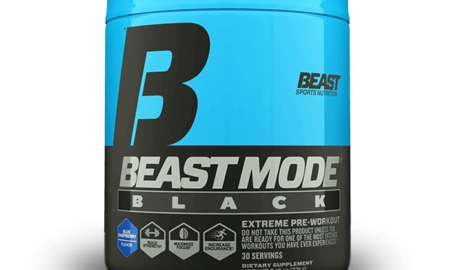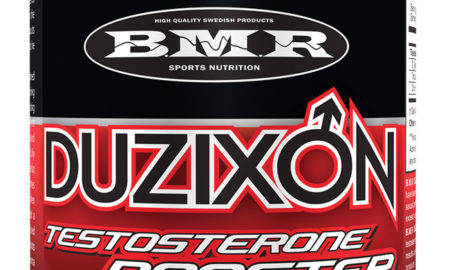One possible side effect of high-dose regimens of anabolic steroids is high blood pressure, or hypertension. It’s a major risk for cardiovascular disease and the number-one risk factor for hemorrhagic stroke, the most common type, in which a blood vessel bursts in the brain. Having high blood pressure also damages the endothelium, or inner lining, of arteries, which sets you up for atherosclerosis, a narrowing of arteries that can result in a heart attack or stroke.
Most medical texts that discuss the side effects of anabolic steroids suggest that the reason they may increase blood pressure is their sodium-retention properties. High-dose steroid use inhibits the enzyme 11-beta hydroxylase, which leads to excessive production of deoxycorticosterone, a mineralocorticoid in the adrenal glands, and, in due course, sodium and water retention. The scenario can also lead to elevated blood pressure. Some high-dose steroid users attempt to circumvent the sodium- and water-retaining properties of steroids by adding diuretic drugs to the mix, but that leads to other problems, such as a mineral imbalance and, possibly, dehydration.
A new study suggests another reason that anabolic steroids can elevate blood pressure.1 It focused on 12 steroid users and nine drug-free men all about the same age, 31. The subjects had been training for at least two years. Those in the steroid group self-administered the drugs for at least one month prior to the study. They’d also used anabolic steroids for at least two years, going on two to four cycles each year. The researchers wanted to know whether using steroids increased the release of sympathetic hormones, such as epinephrine and norepinephrine. That’s significant because those hormones cause a contraction of the smooth muscle in arteries, and elevated chronic amounts of them can cause blood pressure elevation due to the tightened arteries.
The steroid users experienced increased muscle sympathetic nerve activity along with reduced forearm blood flow compared to those not using the drugs. They also had higher 24-hour blood pressure readings. Animal-based studies have shown that giving the animals high doses of stanozolol, sold as Winstrol, increases their blood pressure. Past studies have demonstrated that anabolic steroids may boost blood pressure by interfering with the activity of nitric oxide, which is produced in the lining of blood vessels and dilates, or opens, the vessels—obviously something that would lower blood pressure. Early studies of testosterone found that it could enhance the vascular response to norepinephrine. All anabolic steroids are synthetic versions of testosterone, yet most cardiovascular side effects linked to their use subside when people stop taking them.
On the other hand, the news is grave for those who elect to stay on steroids without a break. They are likely at higher risk for heart attack and stroke. That said, the effect is associated with high-dose steroid use and has nothing to do with testosterone-replacement therapy. In people who are deficient in testosterone, the hormone helps prevent high blood pressure.
Steroid Macabre
While the medical literature suggests that the primary side effects linked to high-dose anabolic steroid use involve the cardiovascular system and the liver—particularly when it comes to oral steroids—case studies occasionally emerge that document some unusual side effects. The fact that such cases involve only one or a few persons suggests that idiosyncratic reactions may crop up that don’t apply to most users. At the same time, you can’t be too careful with high-dose steroid regimens: Do you want to be one of the rare cases for whom side effects prove fatal? With that in mind, let’s look at a few—you know—rarities.
Bodybuilders who inject themselves with steroids can be susceptible to a variety of problems. Infections, or abscesses, at the injection site are one example—caused either by using a nonsterile needle or not paying attention to antiseptic procedures, such as ensuring that the injection area is clean and sterile. Foreign substances could be contained in the injected drug itself. That more commonly occurs with drugs procured on the black market, where there’s no quality control. In addition, standards for veterinary drugs often don’t match what you expect for drugs intended for human use. Veterinary prescriptions can contain impurities that cause localized reactions in human users. Sharing needles, meanwhile, is nothing short of moronic—you leave yourself open to hepatitis and HIV.
A new case study discusses cases where anabolic steroid users developed suspicious masses at injection sites.2 The masses were initially thought to be sarcomas, or connective-tissue cancers. When tissue samples were viewed, the initial diagnosis was consistent with a tumor because of the appearance of the sample. The primary purpose of the case report was to warn physicians to be wary when making an initial diagnosis of a mass found in a steroid user. That, they say, will prevent unnecessary surgery related to tumor removal.
Far more alarming was the case study involving a 23-year-old man who showed up at a hospital complaining of severe sore muscles.3 Both his arms and his legs caused him considerable pain. Tests showed that he had a high elevation of an enzyme that’s released from muscle when muscle is damaged. The extent of the enzyme elevation suggested rhabdomyolysis, or excess muscle breakdown. He was treated with cortisone drugs, but three days later his enzyme count had nearly doubled, indicating that whatever was causing the problem was progressing. He was then given intravenous cortisone, but his throat appeared to be caving in, so they transferred him to the intensive care unit. He was there for 37 days. During that time he went into kidney failure, related to the excess muscle breakdown occurring in his body, and was put on a kidney machine. Still, his muscle enzymes continued to rise. He then developed a number of complications that did not respond to treatment, and he died of cardiac arrest.
The interesting and mysterious aspect of that case is that the man showed no evidence of any infection or inflammation that would provoke such extreme muscle destruction. He showed no traces of bacterial or viral infection or any autoimmune reaction. So what did the doctors attribute his tragic death to? “This gentleman’s death is a manifestation of anabolic steroid toxicity,” they wrote in the study. They suggest that his use of anabolic steroids somehow caused his muscles to disintegrate like trees in a raging forest fire—they could find no other cause for the man’s symptoms! I would suggest that if the death really had been caused by anabolic steroids and it happened more often, that would dissuade potential steroid users more than any antidrug campaign.
The final case study involved a 50-year-old male pro bodybuilder who went into surgery because of a malignant tumor found on his chest wall.4 During surgery he got a few standard anesthetics, including propofol, the same drug that killed Michael Jackson. Of course, it was administered in hospital conditions by trained doctors. Despite that, within minutes of the insertion of a breathing tube, the bodybuilder’s blood pressure drastically dropped while his heartbeat rapidly increased. The doctors gave him drugs that raised his blood pressure, and he was stabilized; the surgery continued. Even though the bodybuilder had last used steroids 12 years prior to the surgery, the doctors attributed the surgical crisis to past steroid use.
Several factors came into play in that surgery: dehydration caused by an overnight fast, a sudden expansion of the patient’s blood vessels due to the anesthesia drugs and an enlargement of the pumping chamber of heart, along with a narrowing of one of his heart valves. The latter effects were ascribed to “long-term steroid damage to his heart,” which was said to have persisted even years after he stopped using the drugs.
The purpose of this case study was to warn surgeons to take a bodybuilding history into account—particularly one that involved heavy drug use for years—when setting up an anesthesia surgical drug protocol. The unstated warning was that athletes who have been on high-dose steroid regimens may present a surgical risk that requires careful monitoring.
Editor’s note: Jerry Brainum has been an exercise and nutrition researcher and journalist for more than 25 years. He’s worked with pro bodybuilders as well as many Olympic and professional athletes. To get his new e-book, Natural Anabolics—Nutrients, Compounds and Supplements That Can Accelerate Muscle Growth Without Drugs, visit www.JerryBrainum.com. IM
References
1 Alves, M.J.N., et al. (2010). Abnormal neurovascular control in anabolic androgenic steroid users. Med Sci Sports Exerc. 42(5):865-71.
2 Weinreb, I., et al. (2010). Factitial soft tissue pseudotumor due to injection of anabolic steroids: A report of 3 cases in 2 patients. Hum Path. 41(3):452-5.
3 Hughes, M., et al. (2009). Anabolic androgenic steroid induced necrotising myopathy. Rheumatol Int. In press.
4 Matyal, R., et al. (2009). Severe hemodynamic instability during general anesthesia in a professional bodybuilder. J Cardiothor Vascul Anesth. 23:208-210.




















You must be logged in to post a comment Login